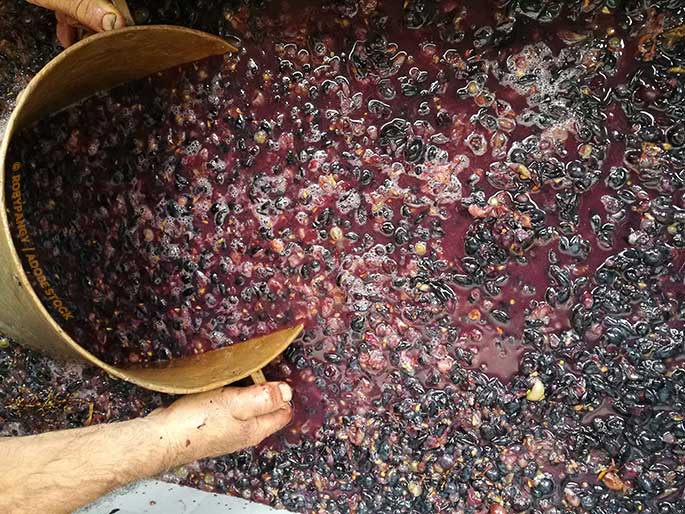
Food waste is not something we associate with winemaking. However, as ZME Science points out, roughly a quarter of the grape in the form of skins, seeds, and stalks is thrown out when the fruit of the vine is transformed into wine, 14 million tons of the stuff, as it turns out. The grape waste product is sent to landfills where it attracts insects and leaches into the surrounding soil, raising its acidity.
Some scientists at the University of Nebraska at Lincoln have found a way to reuse the grape waste, of pomace, as it is called, to make useful products. The pomace, as it turns out, like grapes and wine, is a great source of antioxidants. When consumed, antioxidants bind to free radicals and prevent them from binding to and thus damaging cells. Foods that are rich in antioxidants have been recommended for years as ways to ward off disease and the infirmaries of aging.
One quick application uses pomace as a dietary supplement for pigs, protecting them from disease naturally. A more exciting use is to take the antioxidants extracted from the byproduct of wine production and adding them to other food products such as potato chips, mayonnaise, and ranch-style salad dressing. The addition makes these high-fat foods healthier and extends their shelf life, thus cutting down on food waste in another way.
Many food products are enhanced by adding a substance called ethylenediaminetetraacetic acid (EDTA), an artificial form of antioxidants. When scientists find a cost-effective way to replace EDTA with a more natural source derived from grape pomace, new products that can be labeled as having antioxidants from natural sources can be created, thus satisfying consumer desire for such foods. Grape pomace also acts as an agent against food-borne illnesses, a recurring problem that results in periodic food recalls, another cause of food waste.




































































































































 Three Ways to Engage Teams and Clients to Maximize Your Recycling Program Engagement
Three Ways to Engage Teams and Clients to Maximize Your Recycling Program Engagement  How to Integrate Accessibility Into Your Sustainability Planning
How to Integrate Accessibility Into Your Sustainability Planning  Why Park Benches Can Promote Workplace Well-Being
Why Park Benches Can Promote Workplace Well-Being 
